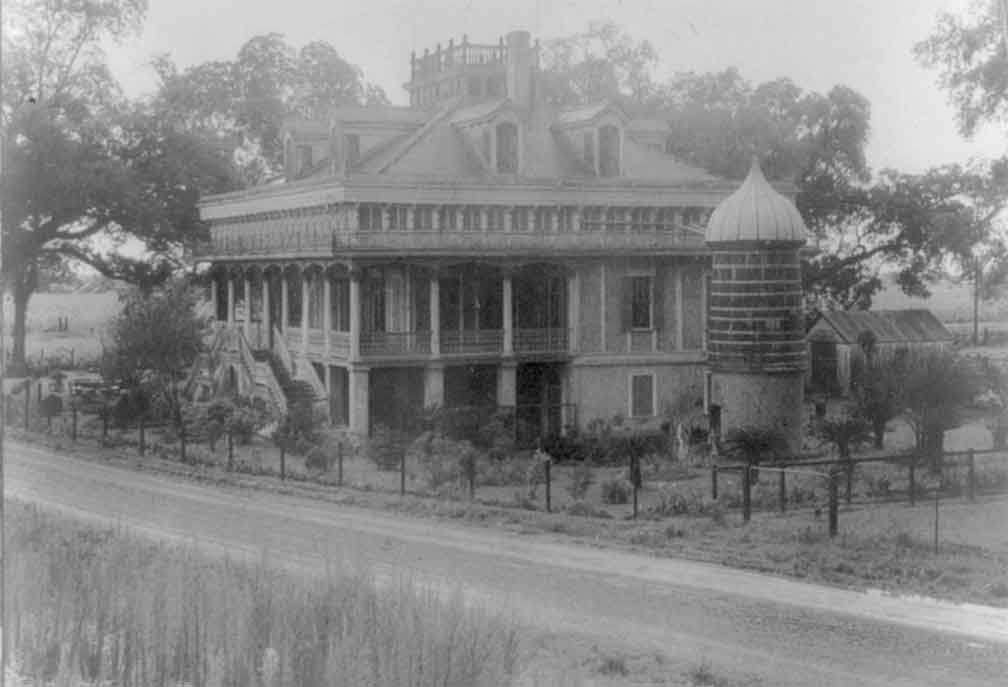The South

New England had small farms, towns and industrialized areas such as Boston and Slatersville, Rhode Island. The Mid-Atlantic states had a combination of small, medium and large farms, towns, and major cities like New York and Philadelphia. A relatively diverse area of the country, it had British-Americans, other European immigrants and free blacks. In the South, there were many large plantations, rSouthern homes and buildings were generally frame or brick structures. Some of the plantation houses, many designed in a neo-classical style, were lavish mansions, displaying the wealth and taste of the owners. Because of the importance and opportunities on the plantation, Southern cities did not attract many residents. Although Baltimore, Maryland and New Orleans, Louisiana were prominent cities by even national standards; regionally important cities like Charleston, South Carolina and Savannah, Georgia grew slowly in the early national period.
The Anglican Church, to which most Southerners at least nominally belonged, exerted much less of an influence than the Calvinist Church in New England. In the South, plantations tended to be spread out, making regular church attendance difficult. People cam from far distances to attend the occasional revival meeting. These meetings provided social entertainment, as well as potential spiritual enlightenment for people of different social strata.
Southern lifestyles differed according to the socio-economic level of the individual. Small farmers tended to live hand-to-mouth; largely independent, but relying on neighbors for major tasks like barn raising. Plantation owners accumulated enough wealth to establish something of an American aristocracy, in which the manners and styles popular in Europe were adopted. Free southerners without land were generally plantation overseers; traveling peddlers or craftsmen; or city dwellers.
Most free Southerners were small farmers who did not own slaves. Many of these farmers were of Scotch-Irish or German descent, living in the up-country of the South. They raised enough crops to provide for their needs, with family members providing the labor. Nevertheless, the presence of large plantations greatly influenced the South. In addition to raising crops like tobacco, rice, sugar and cotton for sale or export; workers on the plantation often produced the items needed for daily living. Anything that could not be made on the plantation would be bought in the nearest town. These items, such as cloth and some food products, were shipped from the North or imported from Europe.
Although there were small communities of free blacks, the vast majority of African-Americans lived in slavery. Conditions for African-American slaves varied from plantation to plantation. While all slaves were denied their civil rights, some were treated more cruelly than others. African-Americans developed a culture to withstand the physical, cultural and social oppression which they suffered. Many used music, especially songs called spirituals, to express their joy and suffering; as well as to communicate information. The words to some spirituals included encoded messages that could only be understood by other slaves. Rituals, such as wedding and funeral services, helped create a community in a society that tried to discourage cooperation among African-Americans. While black marriages were not recognized by law in the South, many couples went through a ceremony that involved jumping over a broom to formally declare their marriage.
After 1793, slavery changed from an increasingly unsustainable system to a profitable institution. In that year, Eli Whitney, a New England teacher, invented a cotton engine to separate the seeds from the cotton. With the "cotton 'gin," cotton farming became a lucrative industry, in which the use of slave labor contributed to the profits. This sealed the fates of African-Americans in the South, who might have been eventually freed as slavery became less economically feasible.elatively few towns and a few large cities, like Charleston and New Orleans. In the up-country of Virginia, the Carolinas and Georgia; however, Scotch-Irish and German settlers worked a number of small farms. The West became the site of both small independent farms, largely in the Northwest; and large slave plantations, generally in the Southwest.
 >
>